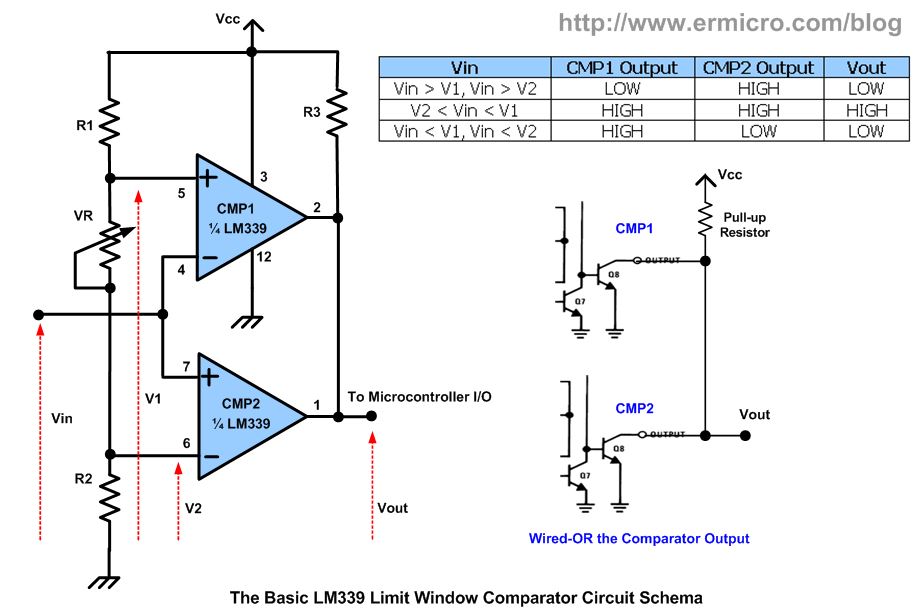The accuracy of reasonably cheap resistance meters scares me. For example, the top-rated one of fasttech,
A DMM on its 200 ohm range is likely to be less accurate still.
I've built a resistance measuring device based on a wheatstone bridge:

In use, one adjusts R3 (a ten turn potentiometer with a calibrated dial) until the voltage/current between A and B is zero.
If I measure the voltage/current with a DMM, it works very well. I'm getting close to three digit accuracy.
However I would like to have the whole thing in a neat box. If I put a panel meter in place of the DMM, then the needle is going to hit the endstops hard before the knob is adjusted. I thought I could just use an op-amp comparator with no feedback and a couple of LEDs, but the bias voltage (or something else) seems to be making it uselessly inaccurate.
Can anyone suggest a simple and cheap circuit which will compare two voltages down to around 100 uV and give a high/low indication? It needs to be calibratable with standard DIY equipment, ('scope, DMM, etc) and preferably not require any calibration.
(I'm not sure of the values of R5/6. They are only there to keep the power in R2 within spec and the measured potentials away from the power rails. Working the figures again, I think a total of 57R should be suitable.)
- It reads from 0.01 to 9.99 ohms
- Accurate to +-0.4%
A DMM on its 200 ohm range is likely to be less accurate still.
I've built a resistance measuring device based on a wheatstone bridge:

In use, one adjusts R3 (a ten turn potentiometer with a calibrated dial) until the voltage/current between A and B is zero.
If I measure the voltage/current with a DMM, it works very well. I'm getting close to three digit accuracy.
However I would like to have the whole thing in a neat box. If I put a panel meter in place of the DMM, then the needle is going to hit the endstops hard before the knob is adjusted. I thought I could just use an op-amp comparator with no feedback and a couple of LEDs, but the bias voltage (or something else) seems to be making it uselessly inaccurate.
Can anyone suggest a simple and cheap circuit which will compare two voltages down to around 100 uV and give a high/low indication? It needs to be calibratable with standard DIY equipment, ('scope, DMM, etc) and preferably not require any calibration.
(I'm not sure of the values of R5/6. They are only there to keep the power in R2 within spec and the measured potentials away from the power rails. Working the figures again, I think a total of 57R should be suitable.)
Last edited:

